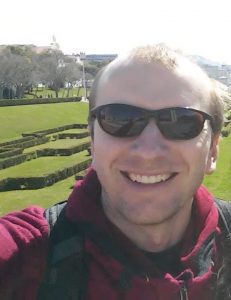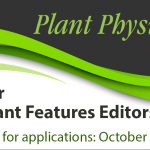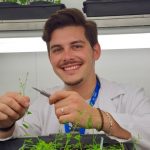Karel Müller: Plant Physiology First Author

 Karel Müller, first author of DIOXYGENASE FOR AUXIN OXIDATION 1 catalyzes the oxidation of IAA Amino Acid Conjugates
Karel Müller, first author of DIOXYGENASE FOR AUXIN OXIDATION 1 catalyzes the oxidation of IAA Amino Acid Conjugates
Current Position
Scientist, Laboratory of Hormonal Regulations in Plants, Institute of Experimental Botany of the Czech Academy of Sciences
Education
Diploma in genetics and biochemistry of microorganisms, Institute of Chemical Technology in Prague (Czechia)
PhD in Biochemistry, Faculty of Natural Sciences, Charles University in Prague (Czechia)
Non-scientific Interests
Desktop and video games, bouldering, friends, garden activities
Brief bio
When I was young, there were no doubts I would become a computer engineer someday. My father was a Professor of informatics and I spent most of my free time with computers, mostly enjoying the then video games. My feeling changed suddenly when I was in the last grade of high school, and I become interested in genetics and molecular biology. Not only because it sounded cool, but I wanted to focus on the core of life and how it all works on molecular level. Following years on universities did not satisfy my dreams properly, as my diploma and PhD topics were more biochemical. But during my first postdoc experience in Laboratory of Plant Regulations, I have finally started to prepare my first plasmids and constructs. During that time, I also managed to merge my skills in molecular biology with bioinformatics. And I believe that genes I inherited from my father turned on during the first assembly of very complex mitochondrial genome of Silene vulgaris.
My current position in the Laboratory of Hormonal Regulations in Plants allows me to combine all skills and experience I gained in the past. In lab, I prepare constructs for expression of tagged proteins, for overexpression or downregulation or even mutation of target proteins. On my laptop, I browse through our RNA-seq data and searching for interesting patterns and transcriptional behaviour of our tobacco cell cultures. Recently, we have discovered very interesting features of auxin metabolism, and I am looking forward to upcoming experiments. I foresee exciting future for the field of auxin metabolism.



